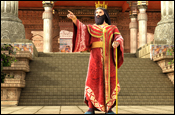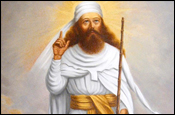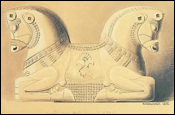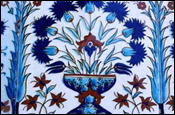Persian Empires History Facts: Origins of the Empire in Persia Around 1200 BC, some Indo-European people from Central Asia moved south into West Asia. These people were called the Persians and the Medes. The speakers of Iranian languages may have migrated into that part of Asia as early as 1500.
Presumably, they were originally a nomadic tribe who filtered down through the Caucasus to the Iranian plateau. The Persian empires ruled in the middle-east until the Islamic explosion.
The first leader of the Persians was Hakhamanish, or Achaemenes, who lived about 681 BC. The Persians were dominated by the Medes until the accession to the Persian throne in 558 BC of Cyrus the Great, an Achaemenid.
He overthrew the Median rulers, conquered the kingdom of Lydia in 546 BC and that of Babylonia in 539 BC and established the Persian Empire as the main power of the region. Know more about the Timeline of Persia
Who was the founder of the Persian Empire?

Cyrus the Great (ca.600 – 529 BCE) was a towering figure in the history of mankind. As the “father of the Iranian nation”, he was the first world leader to be referred to as “The Great”. The origin of the Persian Empire can be attributed to the leadership of one man—Cyrus the Great.
What was the Religion in Ancient Persia?

Religiously, the Achaemenid Empire featured a variety of polytheistic religions or those that worship more than one god. What its followers claimed was the world’s first monotheistic religion developed on the Iranian plateau, though, based on the teachings of the prophet Zoroaster (also called Zarathustra).
By the time of the Achaemenid Empire, Zoroastrianism – which most religious scholars now categorize as dualism, not monotheism – was gaining converts among the Persians. More information about Religions in Persia
History of Persian Cats

The Persian cat is believed to have originated from Iran formerly known as Persia and the neighboring countries. These Persian longhairs were believed to have been discovered there by Europeans way back in the year1614. At that time these cats were kept by nobles in France and Italy. Due to the long history of the Persian opinions on its origin differ.
Ancient Persian Arts

During the Achaemenid’s reign, luxurious works of decorative art were produced. The Achaemenids evolved a monumental style in which relief sculpture is used as an adjunct to massive architectural complexes. Remains of great palaces reveal plans that characteristically show great columned audience halls. The style as a whole and the feeling for space and scale are distinctive. More information about the art and architecture.
Persian Empire Inventions

The Persians were the first people in history to give men and women equal rights, abolish slavery and write the very first human and animal bill of rights. They also built-in 400s BC the very first stadium, the Apadana in Persepolis (later burnt down by Alexander). The Achaemenids built an efficient infrastructure of roads and ports. They bought water in remote areas throughout the empire through the use of qanats, (underground irrigation systems). See more about the inventions and contributions of Persia.
The Culture of Ancient Persia

The major language in Iran, former Persia, is Farsi. It is a branch of the Indo-Iranian languages which is a group of the Indo- European languages. Prior to the foundation of Islam in Iran, Persians are noted for the development of one of the oldest monotheistic religions, Zoroastrianism. The official calendar of Iran is the Persian solar calendar, and the first day of the Persian New Year is the 1st of Farvardin, and this day is called Norouz, meaning New Day.
The Capital of the Persian Empire

During the history of the Persian Empire, five cities served as the royal capital. The first was Pasargadae, built by Cyrus to commemorate his victory over the Medes. It was remote and impractical as an administrative capital. Babylon was rebuilt by Cyrus as a royal capital for his use when affairs brought him to Mesopotamia.
Fall of The Persian Empire
The Persians built a new army, but two years later, they were defeated at Gaugamela. Darius was murdered (330) and Alexander started to reign as an Achaemenid king, keeping the empire together. After Alexander’s death in Babylon (11 June 323), his empire was divided into three parts.
The Achaemenid Persian Empire was ended during the Wars of Alexander the Great, but Persian Empire arose again under the Parthian and Sassanid Empires of Iran, followed by Iranian post-Islamic Empires like Safavids.
Despite the Persians’ effective and conciliatory leadership, their empire did not last. Under King Xerxes in 480 B.C.E., the Persians made an attempt to expand their empire into Greece. The Greek city-states cooperated and held off the Persian threat and even succeeded in almost obliterating the Persian navy.
Facts
The Persian Empire lasted until its overthrow by the Greeks under Alexander the Great in 330 BC. During 332 BC, a battle occurred in the mountainous terrain surrounding the Gulf of Issus. Alexander after the capture of Tyre crucified an enormous number of the defenders.
He marched into Egypt where he was met as a new Pharaoh and founded the city of Alexandria. He made his way after Egypt to Mesopotamia where a final battle took place at Gaugamela in Mesopotamia which brought the Persian Empire to an end.